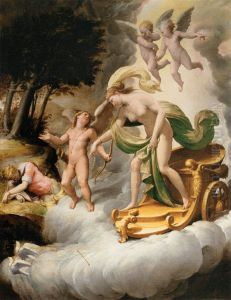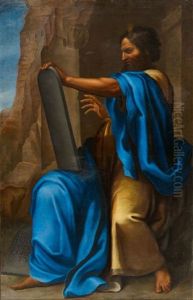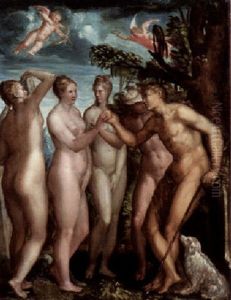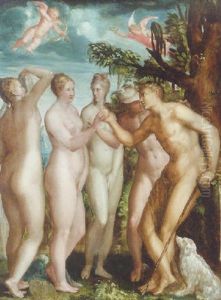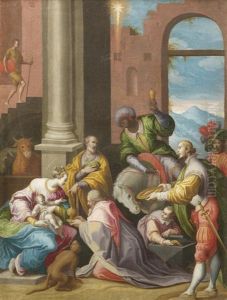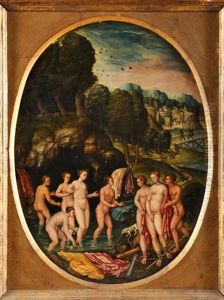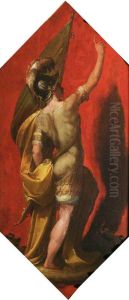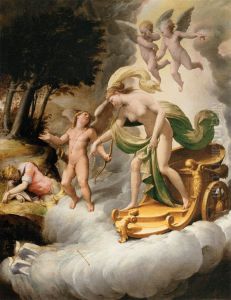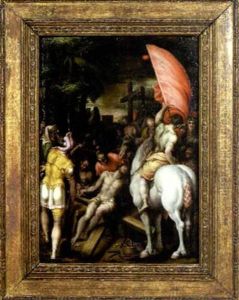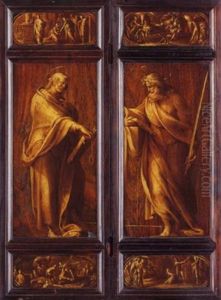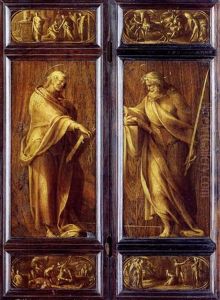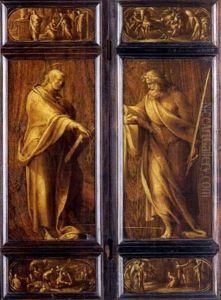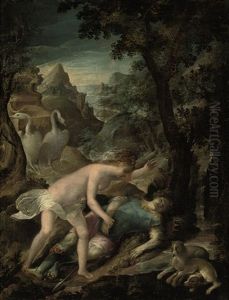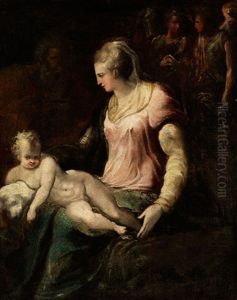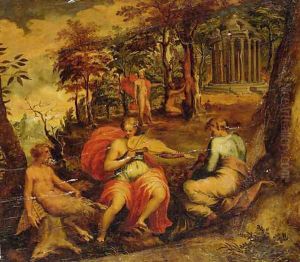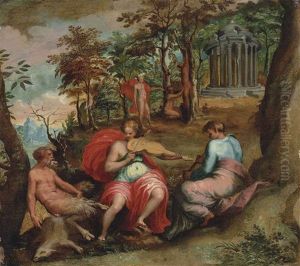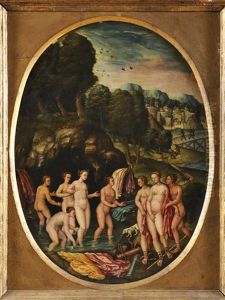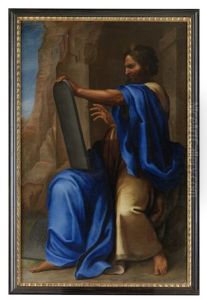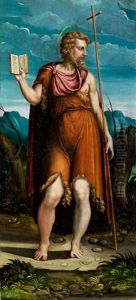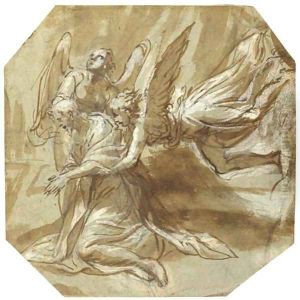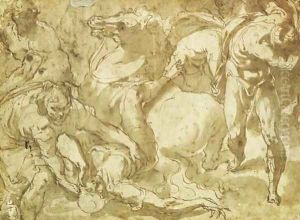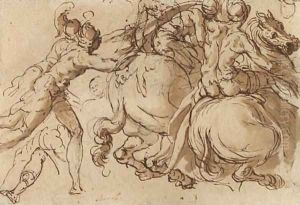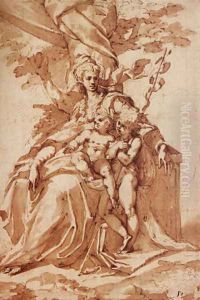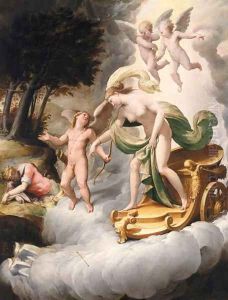Jacopo Bertoia Paintings
Jacopo Bertoia, also known as Jacopo Zanguidi or Giacomo Zanguidi or Bertoja, was an Italian painter and draughtsman of the Renaissance period. He was born in Parma, Italy, in 1544 and is often associated with the Mannerist style, which was characterized by elongated figures and often complex compositions.
Bertoia's artistic journey began under the guidance of his fellow Parmesan, the prominent Mannerist artist Parmigianino, whose influence is apparent in Bertoia's early works. However, his style continued to evolve as he was also exposed to the works of Correggio, another eminent artist from Parma, known for his mastery of chiaroscuro and perspective.
Despite his relatively short life, Bertoia left a mark on the art scene of his time. He was particularly known for his fresco decoration of palaces and churches, which he executed with a dynamic and decorative flair. One of his significant works includes the frescoes in the Palazzo del Giardino in Parma. Unfortunately, many of his frescoes have been either lost or severely damaged over time, making his surviving oil paintings and drawings a crucial part of his remaining oeuvre.
Bertoia's work as a draughtsman was also notable, and he produced a significant number of drawings that display his skill in this medium. His drawings are characterized by their expressive lines and are often studies for his larger works or designs for prints.
Despite his talents, Jacopo Bertoia died young, at the age of 30, in Parma in 1574. His premature death cut short a promising career and limited his potential contributions to the Italian Renaissance. Nevertheless, his existing works continue to be studied for their artistic value and their place within the broader context of 16th-century Italian art.
